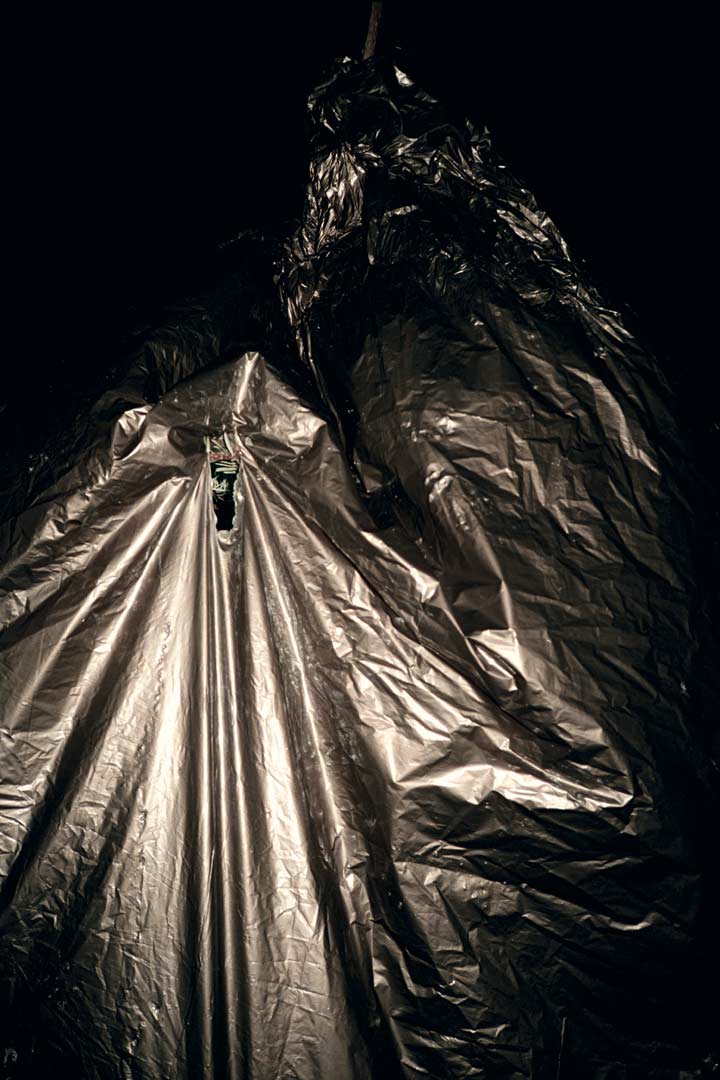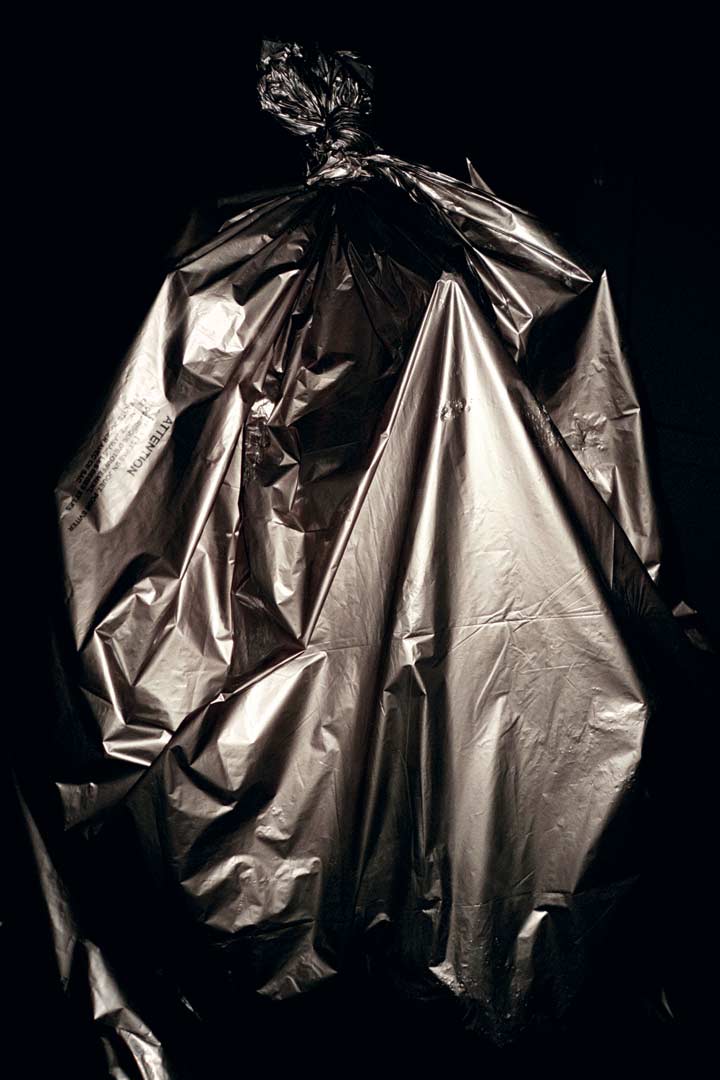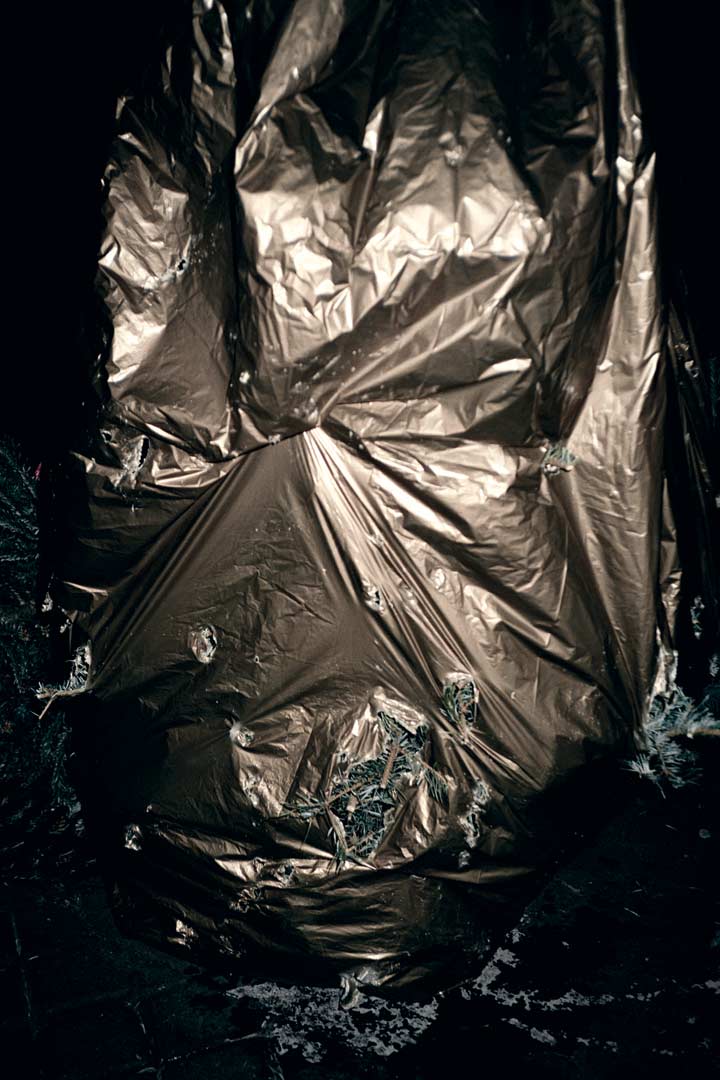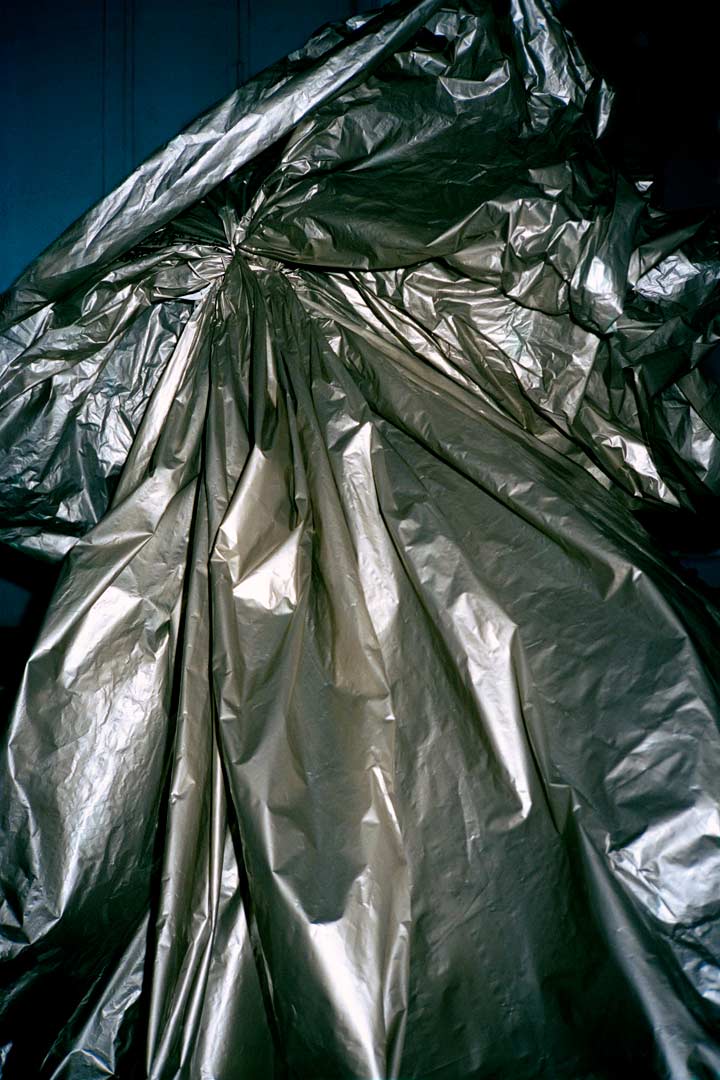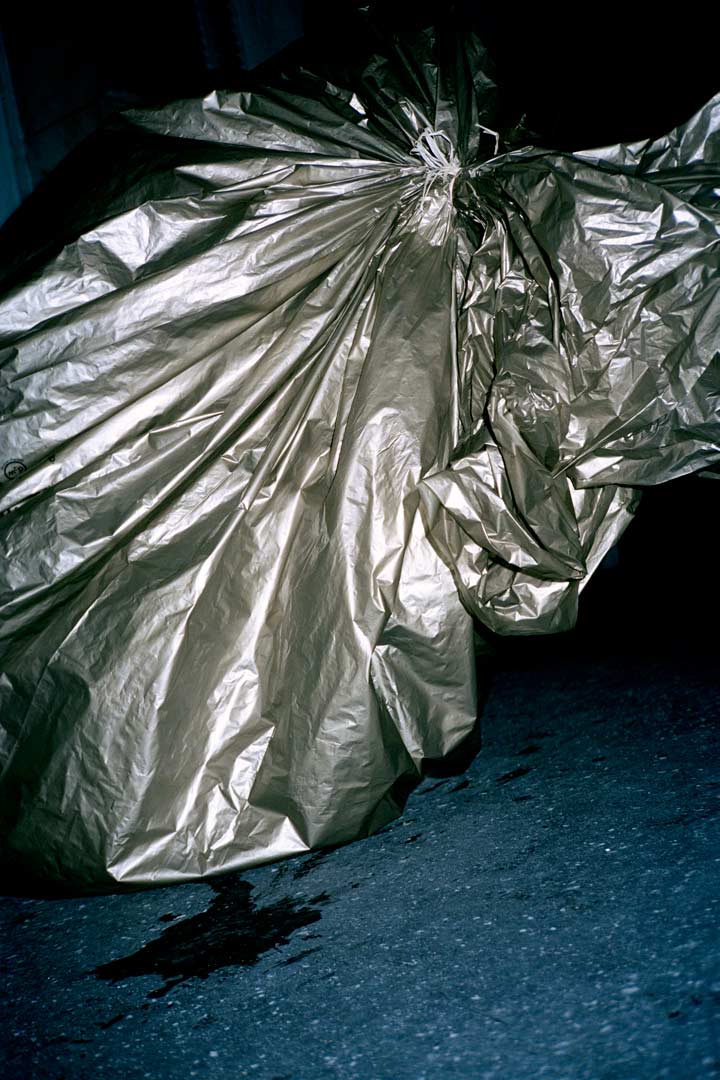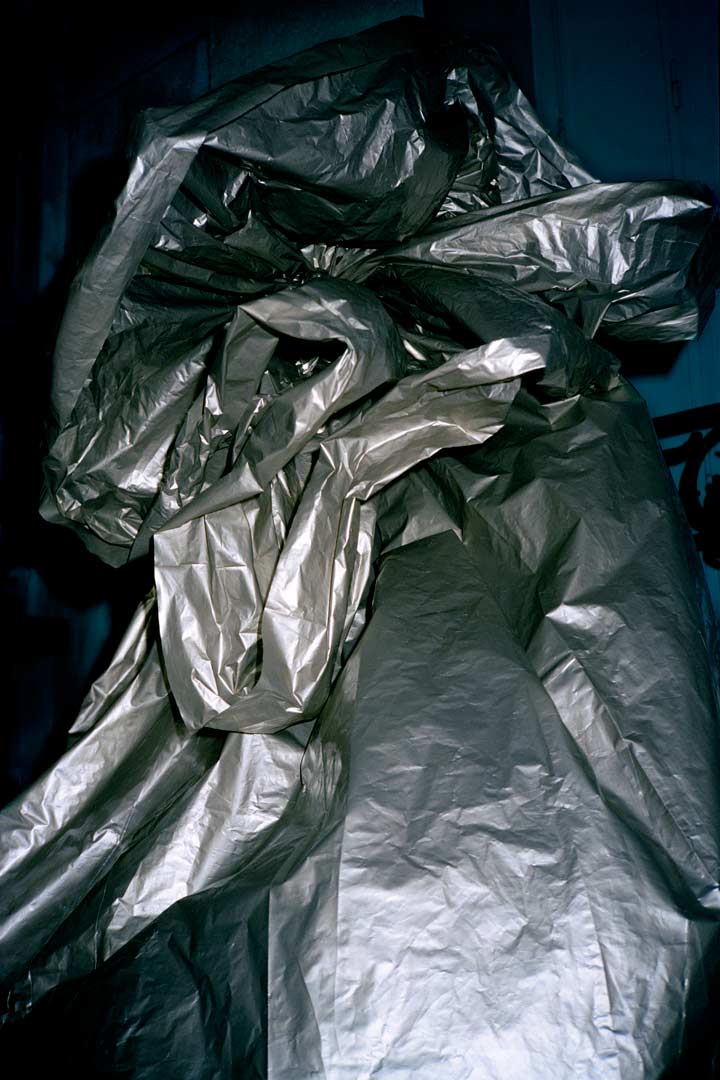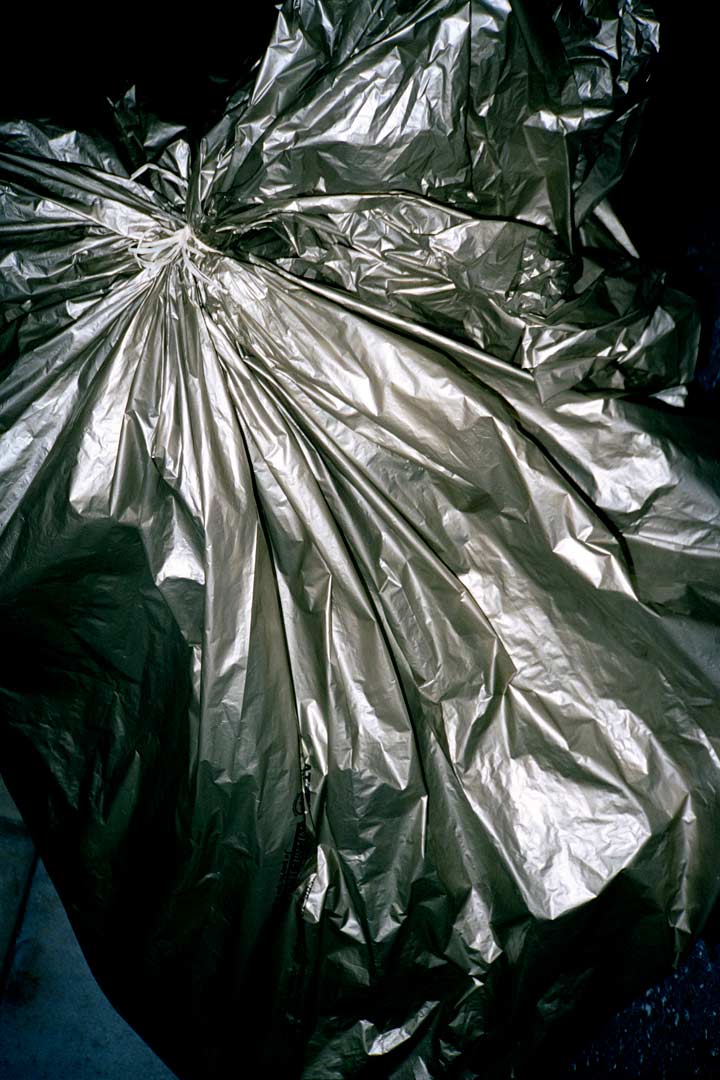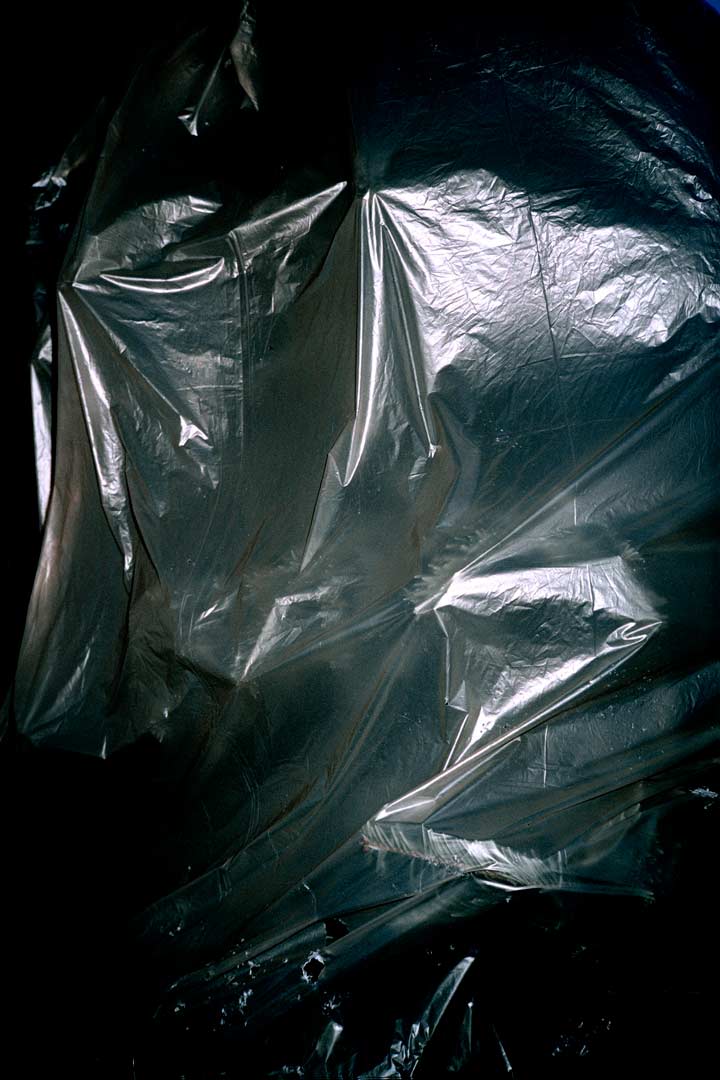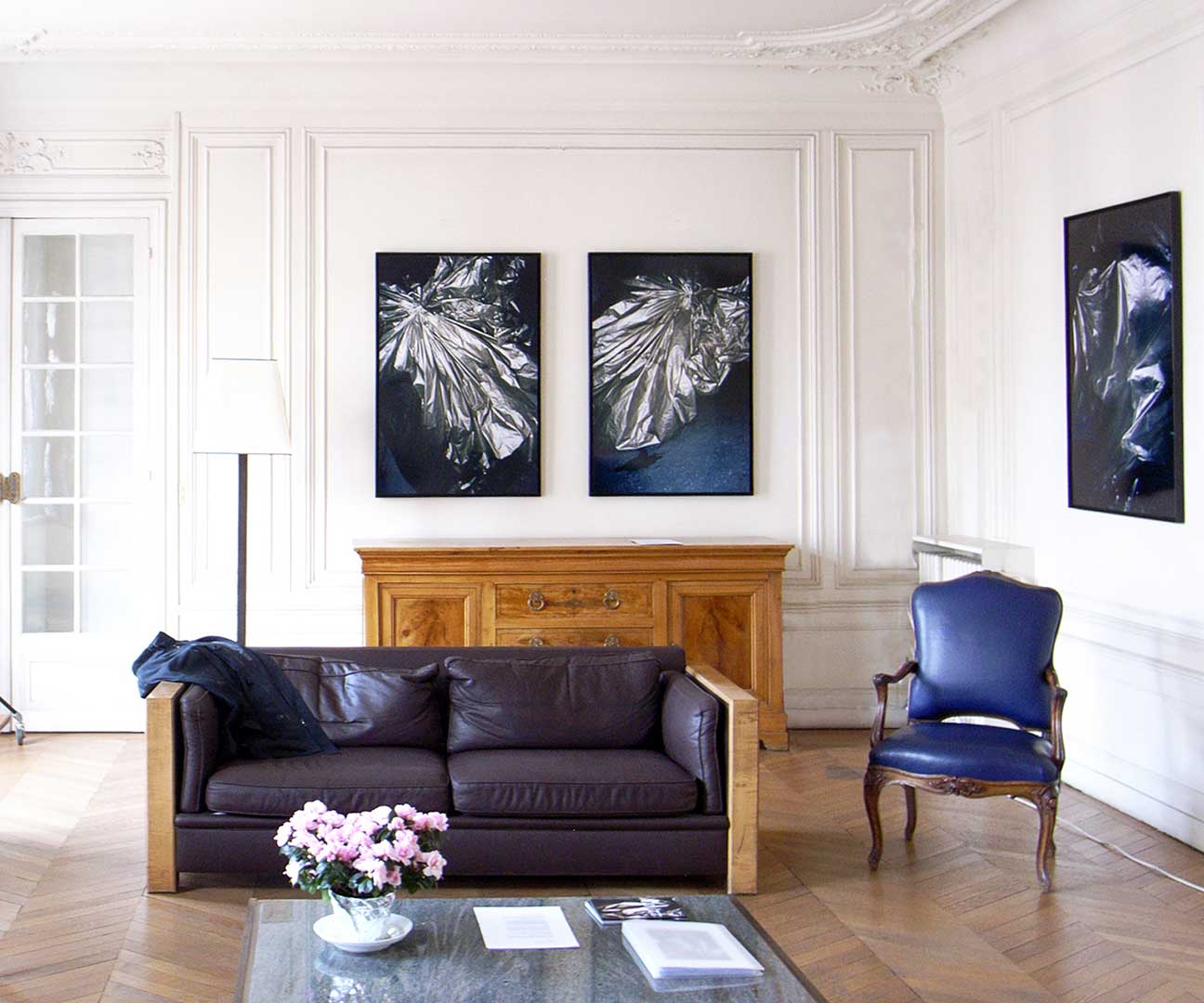DRAPéS
Where many might see only the messy detritus of our leisure-time and parties, here, we find ourselves struck by the lively nobility of discarded objects and remnants. What was once just a bagged-up Christmas tree left on a street corner suddenly becomes a sculpture. Paying particular attention to the folds, the artist reinforces the game of what is shown and hidden, as much in the form as in the content.
The tight, vertical framing decontextualizes the object, distancing it from its initial use and giving the work a sculptural dimension. Meanwhile, flash lighting exalts the plastic and graphic nature of the folds, reinforcing the object’s shape and imbuing it with a sense of life.
If DRAPéS can be seen as a contemporary reimagining of the iconographic tradition of drapery studies, it also works as a metaphor for the complex relationship between man and nature. Here, the plastic matter carries the living memory of the nature it is hiding, while at the same time signaling the destruction of that very nature.
DRAPéS
Là où tout un chacun ne verrait que les traces envahissantes de nos loisirs et fêtes, ici, nous nous heurtons à la noblesse vivace de ces objets et reliquats laissés pour compte. Soudain ce qui ne serait qu’un sapin de Noël emballé et abandonné au coin d’une rue se révèle ici tel une sculpture. L’attention particulière donnée au pli, renforce le jeu du visible et du caché tant dans la forme que dans le fond.
Le cadre vertical, serré qui décontextualise l’objet de son usage initial, lui donne une dimension sculpturale. Tandis que l’éclairage au flash permet l’exaltation plastique et graphique du pli renforçant son architecture pour mieux dessiner la trace d’un mouvement de vie.
Si DRAPéS se donne à voir telle une représentation contemporaine appartenant à la tradition iconographique du drapé, elle est aussi la métaphore du rapport complexe de l’homme à la nature. La matière plastique, ici, porte la mémoire vivante de la nature qu’elle cache, en même temps, qu’elle rend visible la destruction de cette même nature.

